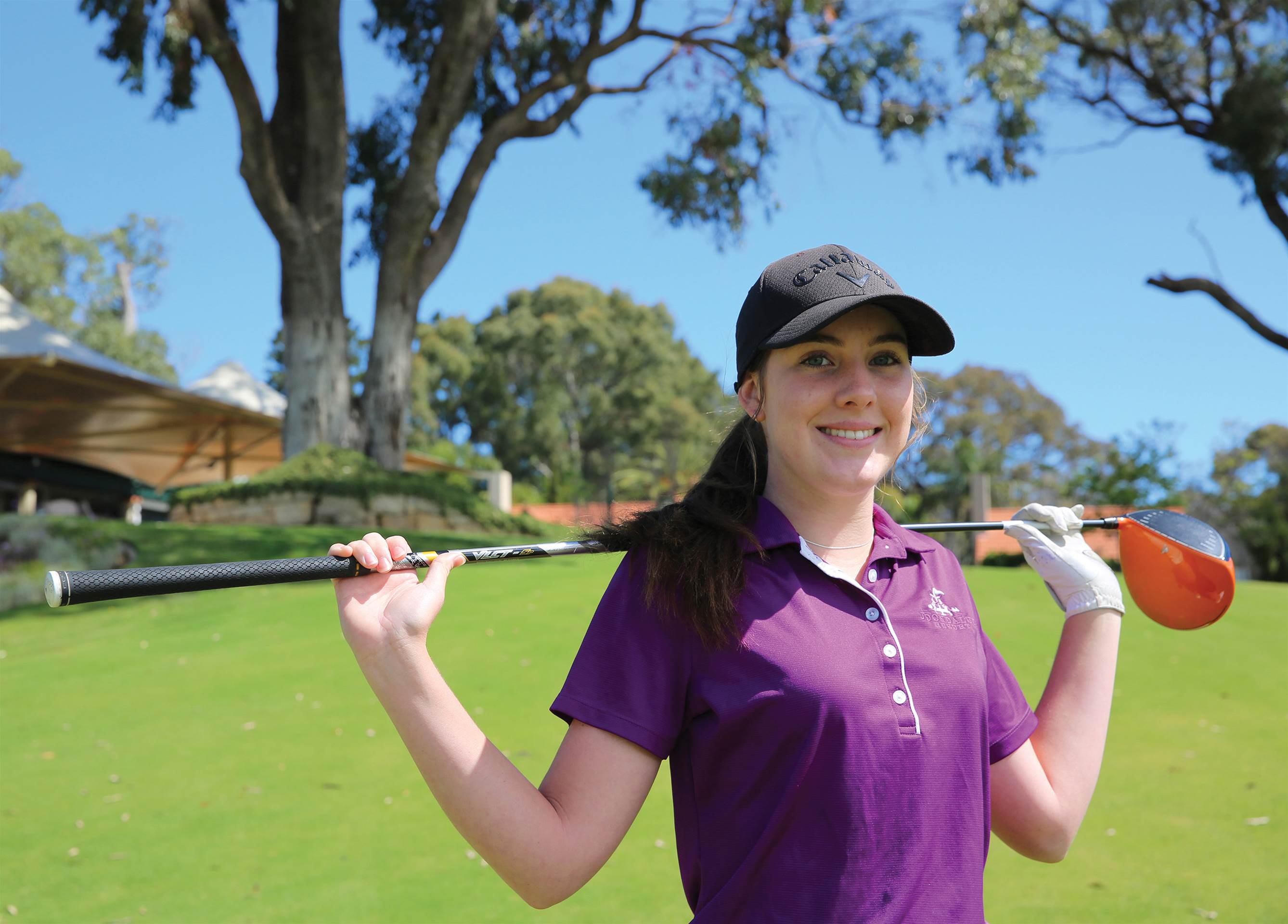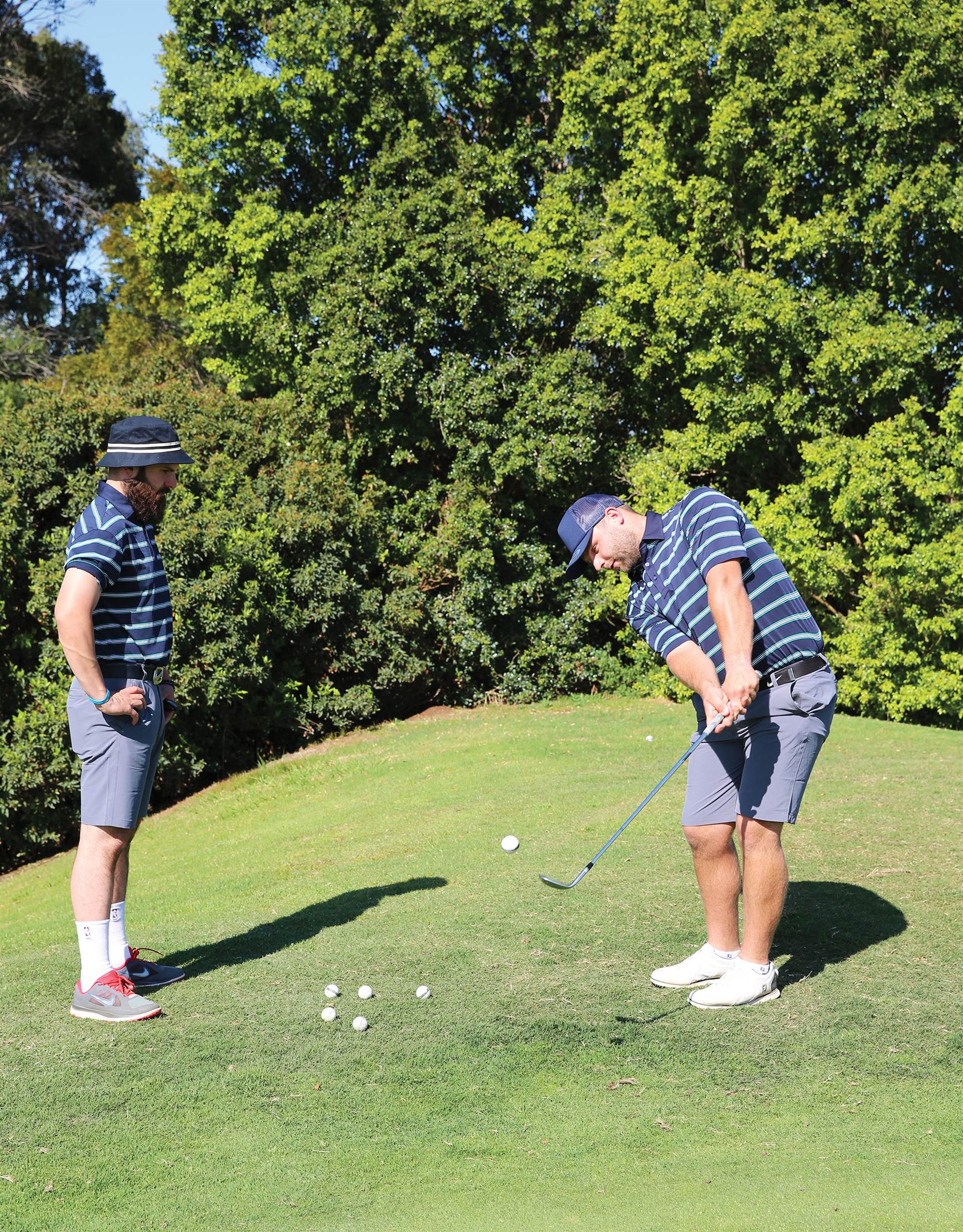Australia’s three most improved golfers for 2018 reveal how it’s done ...
Every golfer dreams of getting their handicap down. For some, it is a lifelong pursuit whether it’s to get to single figures or to nudge closer to a 20-mark instead of 27.
Over the following pages you will meet three Australian club golfers, who have improved more than any other during the past year.
They reveal how they managed to slash their handicap and realise some long held goals to in making their golf game better. Each has a different story about their journey to being a better golfer and the secrets to their success are something every golfer could benefit from.
*Thanks to Adrian Logue at Micropower and Golf Australia for their assistance in the research stages of compiling this article.

DAVID TREASURE
Dubbo Golf Club, NSW
October 2017 handicap: 31
October 2018 handicap: 15
David Treasure has played golf all his life but it wasn’t until he started getting regular lessons that he saw his game improve. In just 12 months, he saw his handicap plummet 17 shots to 14.1, before rising slightly to plateau at 15 at the time of publication.
The 35-year-old land surveyor joined Dubbo Golf Club, in the Central West of NSW, in 2015 and was playing off a 31 handicap in late 2017 when he decided he was going to implement a one-year plan to halve his handicap.
“I joined the club when I moved to Dubbo four years ago and then last year I was about to give up the game,” Treasure confessed. “I was completely over it. The guys in my regular group were telling me I should go and try something else.
“I was trying to compete with my mates and found that they were all hitting the ball fairly consistently and I wasn’t.
“Every part of my game needed work but my driver was particularly bad. I was hitting huge slices and there was a lot of inconsistency across the board. I couldn’t string three or four shots together at the time. Some of my drives wouldn’t make 100 metres … skied shots, slices, tops …everything. I just couldn’t compete
“But I’m not one to say ‘that’s it I’m going to throw in the towel’. I wanted to get better.”
Treasure’s first step to a better golf game was looking for a golf coach, which is when he got in touch with experienced PGA Professional and Golfing Machine Doctorate instructor John Furze at Duntryleague Golf Club, in Orange, some 140 kilometres away.
“I did a lot of research on golf coaches and discovered The Golfing Machine, which offers
an actual structure of teaching … you can read the book and learn as well as going for lessons,” he said.
“The first thing we worked on was my set-up and a pre-shot routine and I did it over and over until it was ingrained … 90 percent of bad shots are caused by a poor set-up.”
Treasure regularly makes the one hour and 45-minute drive to Duntryleague to see Furze but also uses technology to keep in touch with his mentor.

“It’s not an easy drive but I make the effort because I could see the benefits of seeing Johnny as all the parts of my game from the driver through to the short game started to improve,” he said. “We also have a system where I have been filming myself and I send it through to him, views it on his phone and he gives me feedback, which is great.
“My job does give me flexible working hours and allows me to practice everything I have been taught. There’s no point in getting coaching and then not practicing what you have been taught. You have to write notes and remember what your coach has told you and you go away and work on it.”
Throughout the past 12 months he gradually ticked off a list of goals he had set himself – break 100, break 90, have two birdies, have less than 36 putts. Now, with all facets of his golf game improving, Treasure feels confident he can achieve his next goal of reaching a single figure handicap by the end of 2019.
“The lower your handicap gets the harder it is to keep going lower, I realise that,” he says. “But you have to have a goal and that’s the one I’m striving for.”
And Furze has no doubt he will do it.
“The way Dave is swinging now is such a marked improvement to where he was. Its chalk and cheese,” Furze said. “It’s so much better and he just needs to keep working on certain things.
“When we started working on his game, Dave began with mini two feet back, two feet through swings and learning the proper impact positions and gradually built his swing up. It was all back to basics.
“Now he’s got the swing and there are only little things we tune up. He’s so dedicated to improving, he’s applied himself and he works on everything we’ve covered in a lesson. More importantly, he listens and he does.”

PARIS RIVE
Joondalup Golf & Country Club, WA
October 2017 handicap: 17.9
October 2018 handicap: 6.1
Teenager Paris Rive has been playing golf ‘seriously’ for nearly five years since she started following her Dad down to the driving range to hit some balls. Her interest in the game stretches even further back to knocking a plastic ball around the backyard with a plastic club.
“I’ve played other sports but golf has been the one I have stuck with for some time,” the Year 10 student said.
“I enjoy everything about the game. Golf is not the most calming sport in the world but it calms me. I find that when I put in an effort with my golf it also helps me put more effort into other things like schoolwork. If I spend a few hours at the course practicing, I then have to manage my time to do my homework and study.”
Rive’s only coach has been her dad, Marcel, who is a two-marker. She says he made sure she started out with good fundamentals – grip, stance and alignment – but it is her increased hours of practice during the past year that has seen her dramatically improve from an 18-handicap to cement a place in A-grade.
“Dad taught me the proper technique when I first started playing and I stuck with that,” said Rive, who was recently selected in a West Australian schools team. “But I used to come down to the course for two hours and I was done.
“But I have increased my practice this year and the longer I stay to practice the more I realise what I have to work on. There are a lot of juniors here so there’s always someone to practice with which helps, and we all watch each other and learn from each other.
“My handicap has come down gradually over the year and practicing all parts of the game, and becoming more consistent, has been a big part of my improvement.”

Her biggest gains have come close to the green.
“My chipping and putting is definitely better than it was,” Rive says. “I used to leave so many shots out on the course because I couldn’t get up-and-down.
“I’ve found that improving my short game has also helped my strategy on the course … I’m not so worried when I miss a green anymore.”
Unlike most 16-year-old golfers – male or female – she has never idolised the stars of the game and dreamt of one day emulating their feats. In fact, she struggles to even name some of the biggest stars in the sport.
“I don’t follow professional golf. I don’t watch it on television. It’s a bit weird,” she laughs. “I read a few books but I don’t know many of the professionals I think because I’m more focused on what I’m doing.
“As much as I would love to look up to a professional because what they do is absolutely amazing, I have other role models. Everyone is different and I think if I try to match someone I might let myself down by thinking I can’t do it, so I just concentrate on what I’m doing.”
That said, she is driven to achieve two major goals – to one day, soon, beat her Dad off the stick and perhaps combine golf and the study of biotechnology through a US college scholarship.
“I hope I might get the opportunity to go to a school where I can play golf, get proper coaching as well as getting a degree because I enjoy school and I enjoy golf,” she said.
“To incorporate both things would be so cool.”

MATT STAFFORD
Macquarie Links International, NSW
October 2017 handicap: 19.7
October 2018 handicap: 5.9
Matt Stafford’s plunge from a 20 handicap to six in less than 12 months really only tells half the story.
Back in 2015, the 24-year-old fencing installer was a member at Windsor Country Club, on Sydney’s western outskirts, and playing off a 36-handicap. And he couldn’t have cared less.
“I started off 36 there and I didn’t really care how I went, I was just having a bit of fun with my mates,” Stafford said. “I’d just go out there for fun … we’d crack a few beers walking down the 1st fairway, it was great fun.”
It wasn’t until he joined Macquarie Links early last year that he caught the “improvement bug”.
“When I joined here I was playing with better golfers … they were hitting fairways and greens and I thought, ‘I need to catch up to these blokes’. That’s what pushed me to get my first lesson,” he said.
He booked in for a few lessons with Macquarie Links’ PGA Professional Anthony Storich and he started stripping shots from his handicap almost immediately.
“Heading into last summer I started getting a few lessons and would try and get to the club every afternoon, just playing and practicing and my game just seemed to come together.
After that my handicap seemed to come down really quickly,” Stafford said.
“I had five or six lessons and I learnt something different every time … just little things, which really helped. They were simple things really, and I just put all these together.”
The improvement was dramatic.
RIGHT: Stafford is aiming to get down to scratch having improved by nearly 14 strokes in one year. PHOTO: Brendan James.
“I didn’t start out with major goals. I had lots of little goals,” Stafford says. “Halfway through 2017 my goal was to be off 10 by the start of this year and I did it, which was good.
“That was my biggest goal and since then I’ve had just little goals, where I’ll try and hit six fairways on each nine during a round, or have less than 30 putts … things like that.”
Stafford says the key to his rapid rise into A-grade can be attributed to getting over his fear around the greens.
“I could not chip or putt to save my life,” he said. “I played cricket when I was younger so I’ve always been able to hit the ball and distance has never been a problem. But the short game was killing me.
“But now I’m more confident taking a wedge in close to the green instead of trying to putt up a hill from off the green or through the rough.”
Storich adds: “Matt was typical of many guys who can hit the ball long. His feel around the green was not so good and he would decelerate into the ball, causing a lot of problems.
“By working on his technique and feel through practice, his short game is now far more consistent.”
Stafford now has his eyes set on becoming a scratch marker.
“I’d love to get to scratch … I really would. But It’s a long way still,” he said.
“The drop from 10 to six has been the hardest because you have to be so much more consistent with every round you play. Consistency … that’s a part of my game that I will have to work harder on if I want to get to scratch.”
Related Articles

Review: Clearwater Golf Club

Review: Omaha Beach Golf Club













